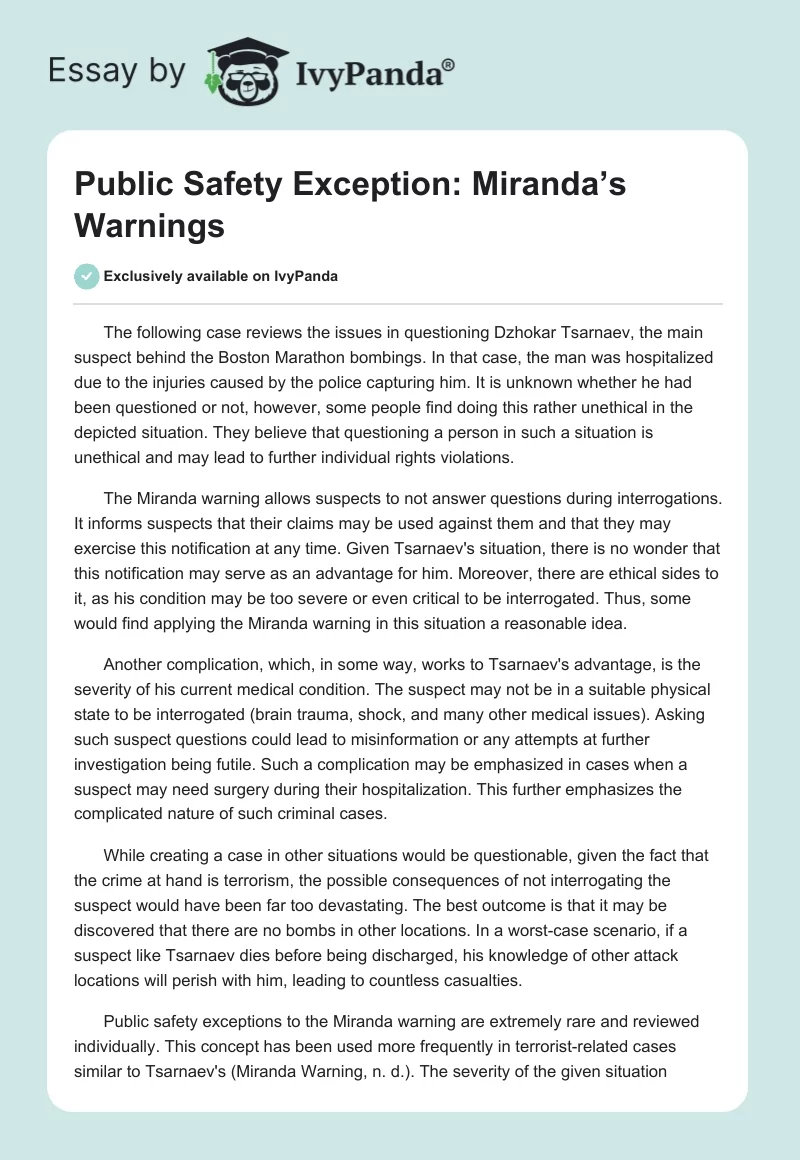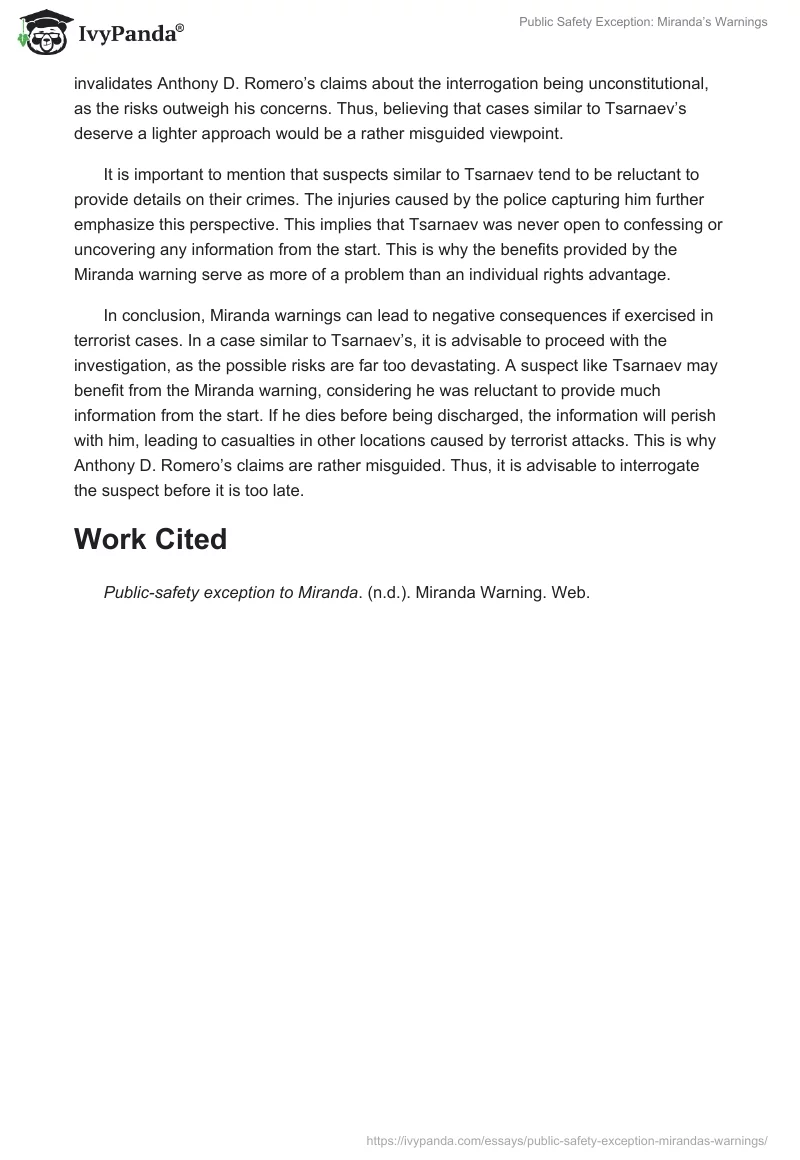The following case reviews the issues in questioning Dzhokar Tsarnaev, the main suspect behind the Boston Marathon bombings. In that case, the man was hospitalized due to the injuries caused by the police capturing him. It is unknown whether he had been questioned or not, however, some people find doing this rather unethical in the depicted situation. They believe that questioning a person in such a situation is unethical and may lead to further individual rights violations.
The Miranda warning allows suspects to not answer questions during interrogations. It informs suspects that their claims may be used against them and that they may exercise this notification at any time. Given Tsarnaev’s situation, there is no wonder that this notification may serve as an advantage for him. Moreover, there are ethical sides to it, as his condition may be too severe or even critical to be interrogated. Thus, some would find applying the Miranda warning in this situation a reasonable idea.
Another complication, which, in some way, works to Tsarnaev’s advantage, is the severity of his current medical condition. The suspect may not be in a suitable physical state to be interrogated (brain trauma, shock, and many other medical issues). Asking such suspect questions could lead to misinformation or any attempts at further investigation being futile. Such a complication may be emphasized in cases when a suspect may need surgery during their hospitalization. This further emphasizes the complicated nature of such criminal cases.
While creating a case in other situations would be questionable, given the fact that the crime at hand is terrorism, the possible consequences of not interrogating the suspect would have been far too devastating. The best outcome is that it may be discovered that there are no bombs in other locations. In a worst-case scenario, if a suspect like Tsarnaev dies before being discharged, his knowledge of other attack locations will perish with him, leading to countless casualties.
Public safety exceptions to the Miranda warning are extremely rare and reviewed individually. This concept has been used more frequently in terrorist-related cases similar to Tsarnaev’s (Miranda Warning, n. d.). The severity of the given situation invalidates Anthony D. Romero’s claims about the interrogation being unconstitutional, as the risks outweigh his concerns. Thus, believing that cases similar to Tsarnaev’s deserve a lighter approach would be a rather misguided viewpoint.
It is important to mention that suspects similar to Tsarnaev tend to be reluctant to provide details on their crimes. The injuries caused by the police capturing him further emphasize this perspective. This implies that Tsarnaev was never open to confessing or uncovering any information from the start. This is why the benefits provided by the Miranda warning serve as more of a problem than an individual rights advantage.
In conclusion, Miranda warnings can lead to negative consequences if exercised in terrorist cases. In a case similar to Tsarnaev’s, it is advisable to proceed with the investigation, as the possible risks are far too devastating. A suspect like Tsarnaev may benefit from the Miranda warning, considering he was reluctant to provide much information from the start. If he dies before being discharged, the information will perish with him, leading to casualties in other locations caused by terrorist attacks. This is why Anthony D. Romero’s claims are rather misguided. Thus, it is advisable to interrogate the suspect before it is too late.
Work Cited
Public-safety exception to Miranda. (n.d.). Miranda Warning. Web.


